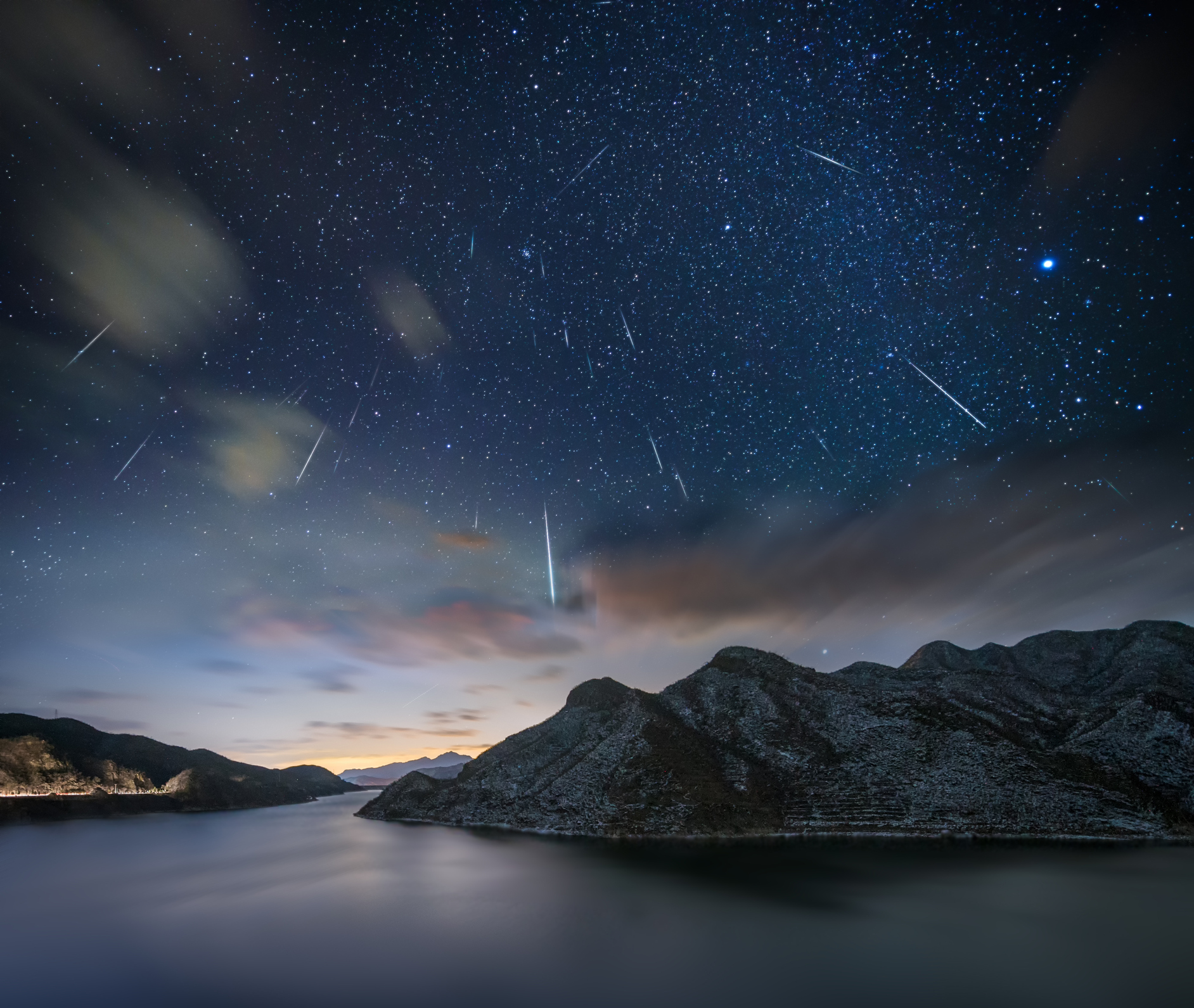How to photograph a shooting star
Taking photographs of falling stars requires impeccable timing, but a camera can do most of the hard work for you

The universe is back in fashion. Everywhere you look there are astonishing images of the night sky. Visit Instagram and you’ll see the Milky Way and the northern lights arching across the sky above beautiful landscapes, while NASA and the James Webb Space Telescope fill the internet with close-ups of planets, galaxies, nebulae and sparkling star clusters.
All that takes expensive equipment and trips to exotic places, right? Wrong. With a the best cameras – and even a compact camera if it has a full Manual mode – you can take incredible images at night. We've already written about how to shoot nightscapes in a more general sense, but here, we'll look at how to capture shooting stars, an incredibly to sight to behold in the night sky.
There are few more humbling sights in nature than shooting stars whizzing across the night sky. Little more than particles called meteoroids that burn up in the Earth’s atmosphere in a bright, burning trail, it’s possible to see shooting stars every night of the year if the sky is dark and clear.

When and how to photograph shooting stars
The best time to photograph shooting stars is during the peak night of a meteor shower, and specialist sites such as Almanac.com have extensive calendars for meteor showers if you don't know when to expect them. Shooting stars are definitely best photographed under a dark sky (so pay attention to the phases of the moon) from around midnight until 3am.
Even if you get your timing spot on, photographing millisecond-long meteor streaks is impossible, right? Opening the shutter on your camera as a shooting star appears is not going to work. So here’s what you do; set up your camera firmly on a tripod as you would for any nightscape shot, then let the camera take 25-second exposures for a few hours (and use an intervalometer so you don't have to do the process manually yourself for that whole duration).
It’s the same process as for a star trail. You'll need an intervalometer or a locked remote shutter release cable makes the entire process hands-free, which is critical as you don’t want to touch your tripod or camera – it must remain completely still.

Let the camera take 25-second exposures for a few hours
When you get back to your computer, scroll through the 100 or more images you have taken that night (the more the better) and with any luck you’ll have a shooting star in one of them. With some incredible luck you could even capture a ‘fireball’ – an especially big and bright meteor that often appears pink or green in color.
Composition isn’t as important as in other nightscape photography, but it doesn’t hurt; a shooting star streaking above a building, tree or rusty old car is always going to be more interesting than just a white line against some stars.
Meteor showers get their names from the constellation where the shooting stars appear to radiate from. For example, the Perseids appear to come from the constellation Perseus, which astronomers call the ‘radiant point’. However, the shooting stars can appear anywhere in the sky, making a wide-angle lens absolutely essential for these all-sky events.
If you want to improve your astro shots, check out the best camera for astrophotography and the best lenses for astrophotography. You'll find inspiration from the Astronomy Photographer of the Year, and we've also got more technical astrophotography tips to help you out too.
Get the Digital Camera World Newsletter
The best camera deals, reviews, product advice, and unmissable photography news, direct to your inbox!

Lauren is a writer, reviewer, and photographer with ten years of experience in the camera industry. She's the former Managing Editor of Digital Camera World, and previously served as Editor of Digital Photographer magazine, Technique editor for PhotoPlus: The Canon Magazine, and Deputy Editor of our sister publication, Digital Camera Magazine. An experienced journalist and freelance photographer, Lauren also has bylines at Tech Radar, Space.com, Canon Europe, PCGamesN, T3, Stuff, and British Airways' in-flight magazine. When she's not testing gear for DCW, she's probably in the kitchen testing yet another new curry recipe or walking in the Cotswolds with her Flat-coated Retriever.
